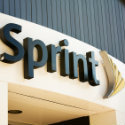
Sprint plans to start using carrier aggregation to bond its LTE TDD spectrum in the 2.5GHz band with its LTE FDD spectrum in 1.9GHz, the carrier revealed Thursday, along with its third-quarter earnings.
As a refresher, carrier aggregation is part of the 3rd Generation Partnership Project (3GPP) 's LTE-Advanced specs that involves aggregating disparate spectrum bands for more bandwidth and faster speeds. Sprint Corp. (NYSE: S) CEO Marcelo Claure has praised the technology in the past for its ability to make the 2.5GHz perform like its spectrum powerhouse, 1.9GHz, but the carrier went a step further in revealing plans to start implementing it today. (See Defining 4G: What the Heck Is LTE TDD?)
Claure said combining Sprint's LTE TDD (Time-Division Duplex) spectrum with its LTE FDD (Frequency Division Duplex) spectrum will give it the flexibility to use the 1.9GHz spectrum for uplink and 2.5GHz for downlink, letting the two provide the same coverage.
Sprint CTO Stephen Bye also chimed in to note that doing so would not change any of its network plans as it would continue to deploy TDD-LTE at 2.5GHz, but -- given the carrier's spectrum depth in 2.5GHz thanks to Clearwire -- it can easily complement it with FDD carrier aggregation. Sprint is looking at using carrier aggregation on all the spectrum it owns, he said, including 1800Mhz, 1900Mhz and 2.5GHz. (See Sprint: LTE TDD Speed Boost Coming Soon.)
"We're not actually talking about a specific time frame at this point, but it's under development and we're working with device and network vendors on the timing of that," Bye said on the earnings call, adding that it's certainly not a few years off, but "more in the near term."
Claure also reiterated past comments that he's open to discussions around potentially selling Sprint's 2.5GHz spectrum, but isn't actively shopping it around. (See Sprint Mulling 2.5GHz Monetization Opps.)
Read more about mobile network strategies on the dedicated 4G LTE channel here on Light Reading.
The aggressive moves Claure has made since coming on the job this summer paid off in the carrier's fiscal third quarter as it added nearly 1 million connections, a 42% increase over last year, including 30,000 post-paid customers. The CEO said Sprint's "Cut your bill in half" promotion has been so successful it will extend it through 2015. (See Sprint Offers to Halve AT&T, Verizon Customers' Bills and Sprint Halves Rivals' Pricing Plans... Sorta.)
Yet, while it was successful in adding customers in the third quarter, the additions came at the expense of earnings. Sprint posted a loss of $2.38 billion, or 60 cents a share, up from a loss of $1.04 billion in the third quarter last year. The carrier earned revenues of $8.97 billion in the quarter and reported an operating loss of $2.5 billion, which includes a non-cash charge of $2.1 billion, and is up from $576 million loss a year ago.
Sprint's shares rose 4.15% to $4.72 after its results were announced Thursday.
— Sarah Thomas, Editorial Operations Director, Light Reading
About the Author(s)
You May Also Like




_International_Software_Products.jpeg?width=300&auto=webp&quality=80&disable=upscale)







